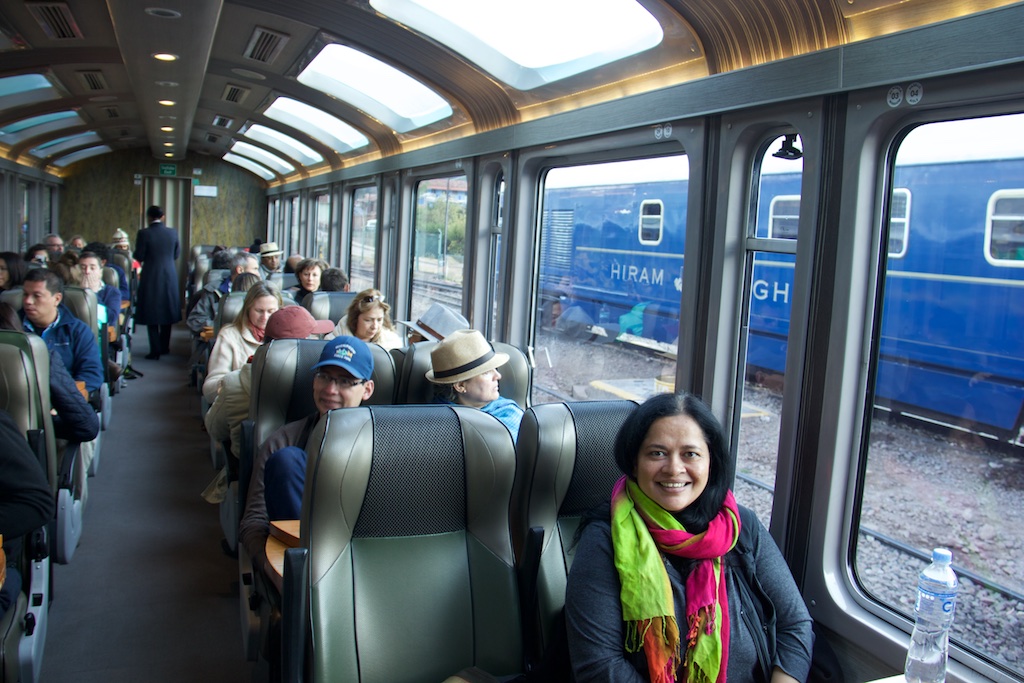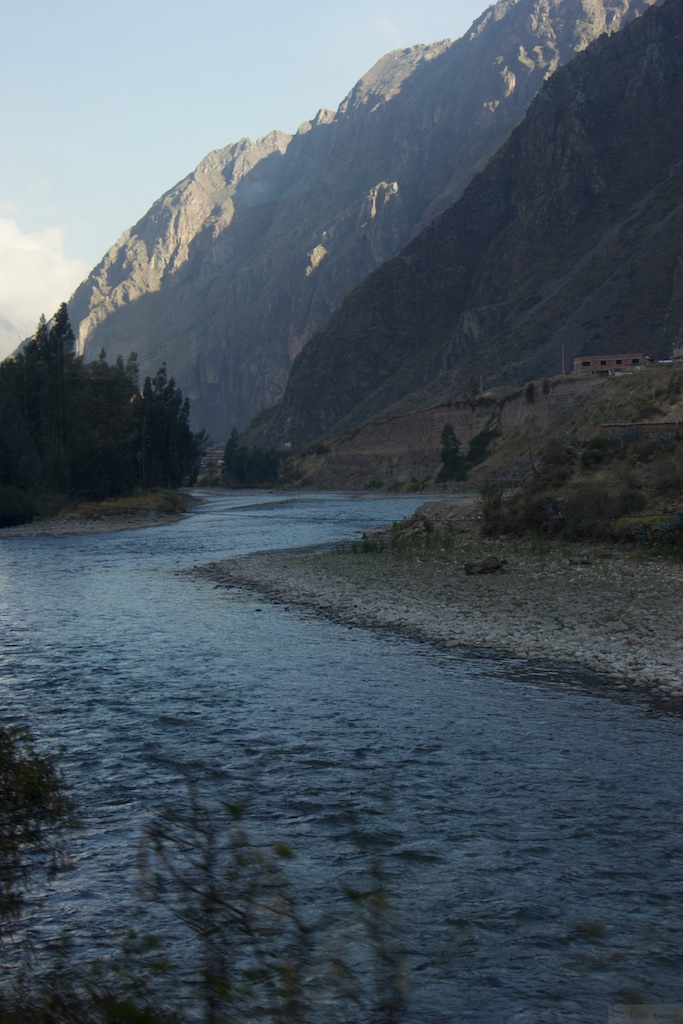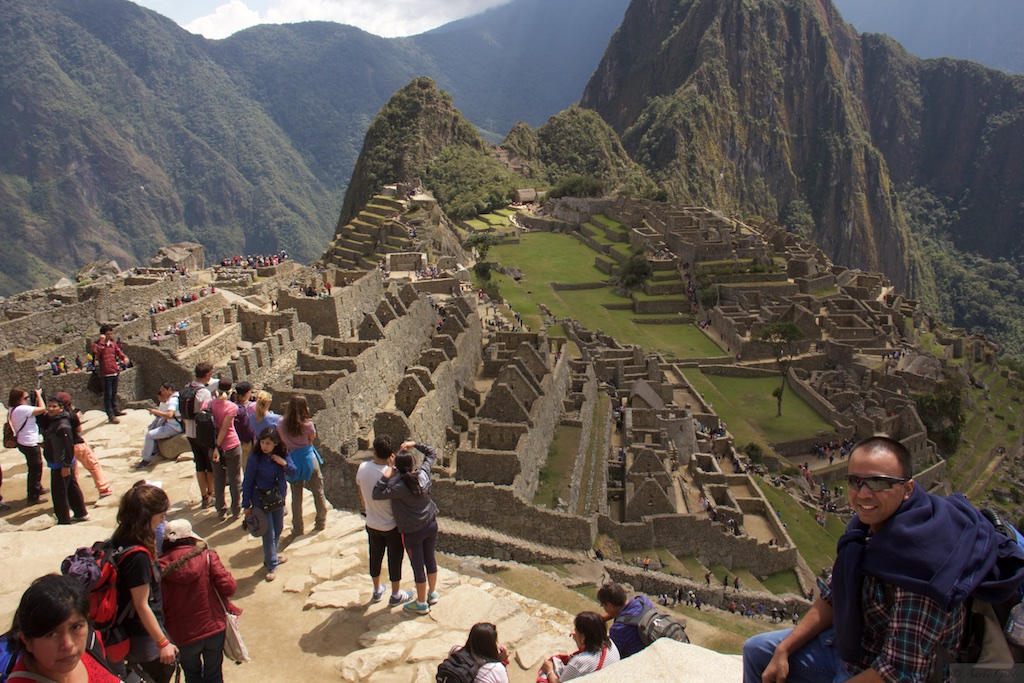Peru is practically synonymous with Machu Picchu, and the thought that I would travel to the country and not see the site was unthinkable. There were plenty of obstacles along the way, some of them in my mind alone. Apparently, this is the high season, because of the influx of American tourists, and Machu Picchu tickets get booked months in advance as they only allow a limited number in each day. The other aspect is that sitting in Indonesia, it wasn’t the easiest thing to research on how to find your way to MaPi. There are 6-day treks, 2-day treks, trains, buses, tour operators, and goodness knows what else. Plus all the reading I was doing was in English blogs, whereas I’m sure Spanish ones might have better and more current information.
Luckily, there are some good sites to get the information you need. Here’s one: http://www.travelandleisure.com/articles/how-to-travel-to-machu-picchu
If, like me, you’re looking for the easiest option (effort-wise), these are the steps to follow:
- Book entrance tickets for Machu Picchu first.
- Next, train tickets from Cusco or Ollantaytambo (another town with some more ruins), and back. Dates depend on whether you want to stay in the Machu Picchu town for one or two nights before visiting the site or not. We did a day trip, so no hotel required at Machu Picchu. Actually the town is at the foothills of the mountain and is better known as Aguas Calientes (hot springs), and looks pretty tacky, whatever little we saw of it, and overpriced too, because of its location.
- Third, hotel and flight tickets for Cusco. We flew LAN airlines from Lima to Cusco, and have been very impressed by their professionalism and customer orientation (more on that later). Hotels in Cusco are aplenty, just use http://www.tripadvisor.com for reviews and decision-making.
- All of the above can also be done with the help of a travel agent or tour operator, but I like to be independent, as far as possible.
- Don’t forget to carry your passport/ ID on your trip, because they will check multiple times.
Getting back to my blogging frame of mind, once all the tickets were booked, I should’ve been relaxed and ready, but instead, I had a couple of sleepless nights thinking of the train that we had to catch, and the bus ride to the entrance of the monument, and how I might miss something if I overslept, as even the alarm is different on the other phone (remember I lost my iPhone?). Consequently, I was waking up much before the alarm, which is probably a good thing.
Our hotel folks were sweet enough to pack us a lunch bag as we had the early morning train to catch. Quite a fancy train experience in the Perurail Vistadome:
With its enormous glass windows on the sides and the top, we could admire the beautiful landscapes along the way. Pictures from moving vehicles aren’t the best, but I can’t resist posting one:
The 3-hour+ ride is easy going, there are guide books and souvenirs of Machu Picchu on sale. We bought a book, and had the Lonely Planet guide on the iPad, as we didn’t want to have a guide there.
Disembarking at Aguas Calientes, we had a short walk to the bus terminal, paid for a return ticket, and had a bumpy, dusty 8 km, 25 minute ride to the entrance of Machu Picchu. It’s also possible to hike up the trail to the entrance from the train station. There are steps carved into the hillside, so you probably end up covering 2-4 km only, but all uphill. We were looking for the least effort, so bus it was.
I mentioned that numbers are limited, but it still seemed quite a lot of people out there. Probably because everyone was jostling for the best spot for selfies. We did our bit to add to the crowd.
As soon as I set up the tripod for a timed photo of the two of us, the guards came whistling, so poor Souvik ended up lugging it all the way for nothing.
After having a bunch of unsatisfactory ‘iconic’ shots of the monument, we started our exploration of Machu Picchu. Not much is known about the structure, and a lot is assumptive. Believed to be built at the height of the Inca period, around 1450 A.D, as a retreat for the rulers from the cold winters of Cusco, this place stayed undiscovered by the Spanish conquistadors. However it came to light in the western world when Hiram Bingham, an American historian, made an exploration in the region. He followed the same policy of other invaders though, and took back a number of artefacts to Yale University for ‘further study’, but those were never returned to the site.
Regardless, Machu Picchu stands as one of the finest examples of Inca planning, architecture and engineering. The structure is much bigger than it appears in photos. It is believed to have housed any number between 500 to 1200 people in its heyday. The mountain is terraced on all sides to prevent landslides, and for agriculture. The agricultural section is separated from the ‘urban section’ by a dry moat. There is a Temple dedicated to the Sun God, a grand central plaza, ceremonial structures, residential areas, bathing areas, working areas, even tombs for the rulers. No amount of photos and explanations can replicate the feeling of walking through the structure, and feeling it for yourself. Unsurprisingly, this place is on the bucket list for so many people, and we were fortunate to be there.
Señor San Roman had told me the day before that the Inca style of building was to mimic their natural surroundings. I do see shades of that in some of the structures. The triangular sections above the walls do look like the mountains around the area!. You don’t notice the terraces unless you look very closely. It’s beautiful. The Incas paid special attention to the stones in the scared structures. See how the temple walls and the tomb are polished to a smooth finish, as compared to other (less important) structures above? And all the walls are just stacks of stones, no mortar to bind them together. They use principles like offset alignments of the stone and trapezoidal doors, windows, niches, to withstand seismic shocks. There are channels to manage the flow of fresh water, and waste water. It’s probably all done manually, without the use of any beasts of burden.
By the time we got there, it was midday, and after a couple of hours of exploration, going through each section and figuring out its function, we were depleted of energy in the hot sun. Quite a change from the previous days of bitter cold and grey skies. Though I keep saying ‘easiest path’, there’s a LOT of climbing up and down the steps that take a toll on your feet and knees and breath. A quick look at the photos, and we could find no good ones of ourselves, so against all our good sense, we climbed back up on the hill to the guardians huts, for that iconic shot. Most of the crowd had dissipated and we had the place to ourselves. This time we got it right.
The Incas probably built this section for the guards as a lookout point, and to watch over their structure, little knowing that it would be THE spot for 99% of all photos of Machu Picchu down the ages!
We had a train to catch in the evening, so we reversed our tracks, back on the dusty bumpy bus ride to the train station. The night ride had nothing to admire on the outside, but the staff on the train put up a spirited ‘fashion show’ for us, showcasing some lovely alpaca wool garments with great flair, and of course, an opportunity to buy later.
That night I slept like a log.
































This should have been fun !! Will be There someday… Cheers
LikeLike
It was! I hope you do make it there… it’s worth it.
LikeLiked by 1 person
Wifey, am so so so motivated now to get there too – it’s on this bucket’s list.
LikeLike
Haha, Jags!
LikeLike